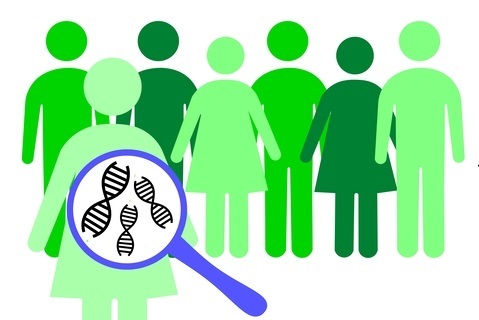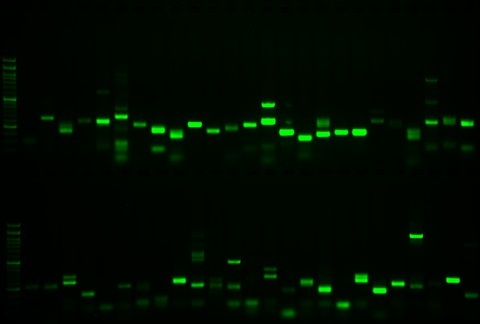
 Data Structure
Data Structure Networking
Networking RDBMS
RDBMS Operating System
Operating System Java
Java MS Excel
MS Excel iOS
iOS HTML
HTML CSS
CSS Android
Android Python
Python C Programming
C Programming C++
C++ C#
C# MongoDB
MongoDB MySQL
MySQL Javascript
Javascript PHP
PHP
- Selected Reading
- UPSC IAS Exams Notes
- Developer's Best Practices
- Questions and Answers
- Effective Resume Writing
- HR Interview Questions
- Computer Glossary
- Who is Who
What are Microsatellites (SSSR’s) and What Is Microsatellite Database
An Overview
Microsatellites or Simple Sequence Repeats (SSRs) are small tandemly repeated DNA sequences present in the genome of almost all eukaryotic organisms. These repetitive DNA sequences are short, usually consisting of 1-6 base pairs in length, and are highly variable in number and length among individuals within a species. The variability of microsatellites makes them a powerful tool for population genetics, evolutionary biology, and genetic mapping.
Microsatellite Database (MSDB) is a publicly accessible database that houses information on microsatellites. The database contains information on the location, size, and number of repeats for each microsatellite locus in various species. The MSDB is used by researchers worldwide to identify microsatellites for their specific research needs.
Discussed below is the biology and applications of microsatellites, and explore the features of the Microsatellite Database (MSDB).
Microsatellite Biology
Microsatellites are composed of simple repetitive sequences of DNA, usually consisting of 1-6 base pairs in length. They are found in both coding and non-coding regions of the genome and are highly variable in number and length among individuals within a species. The variability of microsatellites is due to differences in the rate of mutation, recombination, and slippage during DNA replication.
Microsatellites are classified into three categories based on their length: short, medium, and long. Short microsatellites have fewer repeats, ranging from 4-10 base pairs, while long microsatellites have more than 20 base pairs. The length of the microsatellites affects their stability, with shorter microsatellites being more stable than longer ones.
Microsatellites are often referred to as Simple Sequence Repeats (SSRs) because they consist of repeating units of a single or few nucleotides. The most common SSRs eukaryotic genomes are dinucleotide and trinucleotide repeats. However, tetra-, penta-, and hexanucleotide repeats are also present in some species.

Applications of Microsatellites
Microsatellites are widely used in various areas of biological research. Some of the most common applications of microsatellites include ?
Population Genetics: Microsatellites are used to assess genetic diversity within populations, estimate gene flow between populations, and determine the genetic structure of populations.
Evolutionary Biology: Microsatellites are used to reconstruct the evolutionary history of species, determine the genetic relationships between taxa, and study the patterns of speciation and hybridization.
Genetic Mapping: Microsatellites are used to map genes in various organisms, including humans, mice, plants, and livestock.
Forensic Science: Microsatellites are used in forensic science to analyze DNA samples from crime scenes and identify suspects.
Conservation Biology: Microsatellites are used to study the genetic diversity of endangered species, monitor their populations, and develop conservation strategies.
Microsatellite Database (MSDB)
The Microsatellite Database (MSDB) is a publicly accessible database that houses information on microsatellites. The database contains information on the location, size, and number of repeats for each microsatellite locus in various species. The MSDB is used by researchers worldwide to identify microsatellites for their specific research needs.
The MSDB was first created in 1999 by Dr. Takauji Sasaki at the University of Tokyo in Japan. The database was initially designed to provide information on microsatellites in rice and Arabidopsis, two model plant species. Since then, the MSDB has been expanded to include information on microsatellites in over 1600 species, including animals, plants, and fungi.
Features of the MSDB
The MSDB is a comprehensive database that provides information on microsatellites in various species. Some of the key features of the MSDB include ?
Search Functionality
The MSDB provides a powerful search engine that allows users to search for microsatellites based on various criteria, including species name, chromosome location, repeat unit, and number of repeats. The search results provide information on the loca2tion, size, and number of repeats for each microsatellite locus.
Data Download
The MSDB allows users to download microsatellite data for various species in various formats, including FASTA, Excel, and text. The downloaded data can be used for further analysis in various software programs.
User Contributions
The MSDB allows users to contribute new microsatellite data to the database. Users can submit new microsatellite data along with the species name, chromosome location, and other relevant information. The MSDB team reviews the submitted data and adds it to the database if it meets their quality standards.
Visualization
The MSDB provides interactive graphical tools that allow users to visualize microsatellite data in various ways, including scatter plots, histograms, and heat maps. These tools can help users identify patterns and relationships in the data that may be useful for their research.
Quality Control
The MSDB has a rigorous quality control process that ensures the accuracy and consistency of the microsatellite data. The quality control process includes manual curation and validation of the submitted data, as well as automated checks for data completeness and consistency.

Uses of the MSD
The MSDB is a valuable resource for researchers in various fields of biology. Some of the key uses of the MSDB include ?
Microsatellite Marker Development
The MSDB provides a comprehensive list of microsatellites in various species, which can be used as a starting point for developing new microsatellite markers. Researchers can use the MSDB to identify suitable microsatellites for their specific research needs, such as population genetics, genetic mapping, or forensic science.
Comparative Genomics
The MSDB can be used to compare microsatellite data across different species and study the evolution of microsatellites in different lineages. This can help researchers understand the mechanisms underlying microsatellite variation and evolution, such as mutation, slippage, and selection.
Conservation Biology
The MSDB can be used to study the genetic diversity of endangered species and develop conservation strategies. By analyzing microsatellite data from different populations, researchers can identify genetically distinct groups and prioritize conservation efforts accordingly.
Forensic Science
The MSDB can be used in forensic science to identify suspects based on DNA evidence. By analyzing microsatellite data from crime scenes and comparing it to microsatellite data from suspects, investigators can determine the likelihood of a match and use this information in criminal investigations.
Conclusion
Microsatellites are small tandemly repeated DNA sequences that are highly variable among individuals within a species. They are a powerful tool for population genetics, evolutionary biology, genetic mapping, forensic science, and conservation biology.
The Microsatellite Database (MSDB) is a publicly accessible database that provides comprehensive information on microsatellites in various species. The MSDB is a valuable resource for researchers in various fields of biology, and its use is expected to continue to grow in the coming years.

